27. Martindale Hall
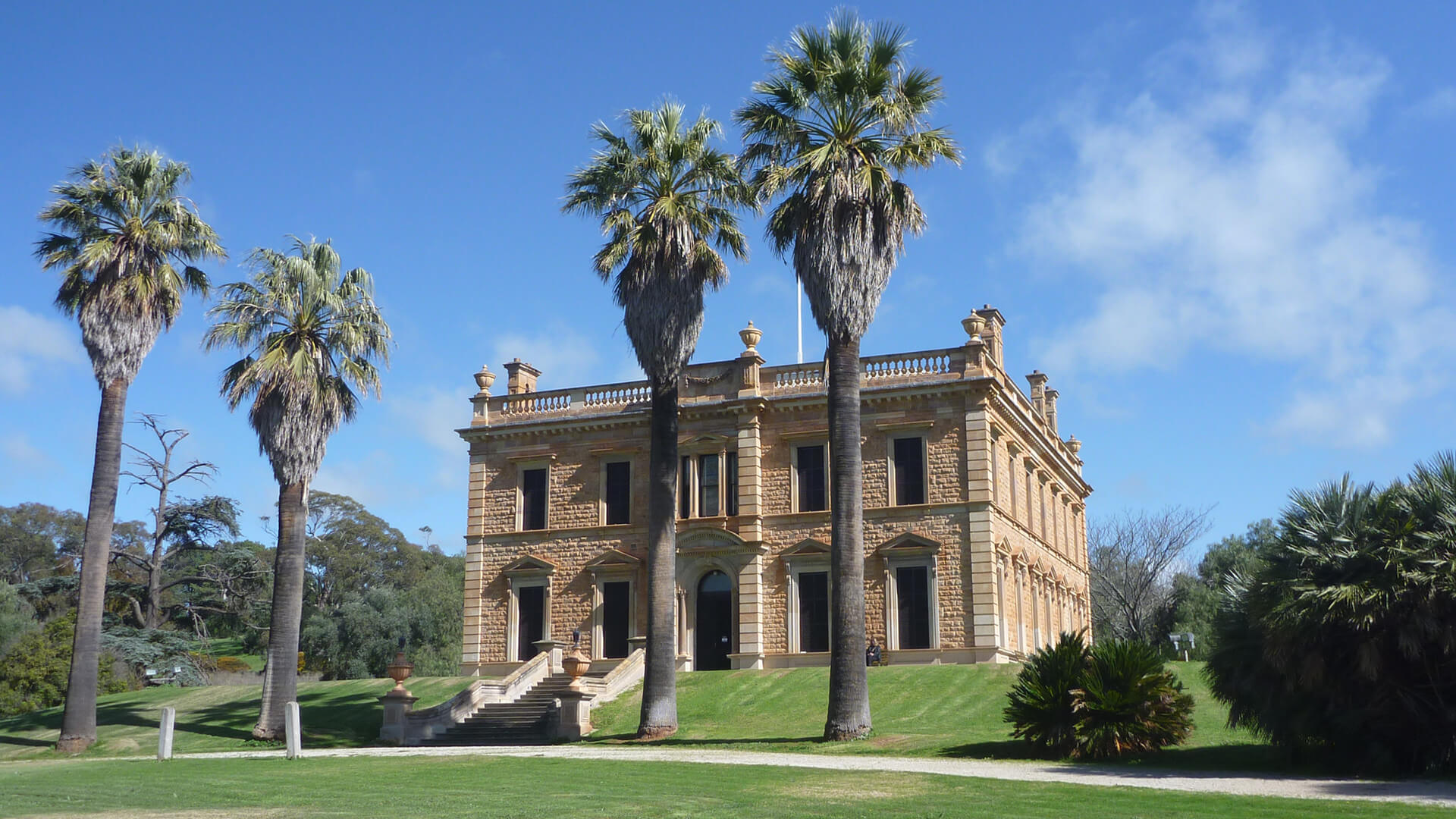
Martindale Hall, a property including a mansion and its interiors, coach house, stables, and associated structures, is closely associated with the pastoral and economic development of South Australia in the nineteenth and twentieth centuries. The main house was constructed for Edmund Bowman Jr., in 1879-1880 to a design prepared by London architect E Gregg, while the coach house was probably designed by Adelaide architect EJ Woods. The construction of the mansion and other structures was supervised by Woods and main builder Robert Huckson. Martindale Hall is an outstanding example of the grand country mansions constructed by wealthy pastoralists and represents the ‘baronial’ lifestyle achieved by them. The property including the mansion, its interiors and furnishings, and coach house retain a high degree of integrity and illustrate a way of life that no longer exists in South Australia. The classical styling, proportions and detailing of the external elevations of the mansion and coach house are of a very high quality, and the elaborate detailing of interior features such as timberwork, parquetry floor and plaster work to cornices, ceilings and gallery are finely executed. Martindale Hall remains as a testament to the successful establishment and ongoing management of the intergenerational pastoral empires created by the Bowman and Mortlock families.[2] The property was bequeathed by the Mortlock family to the University of Adelaide in 1972 and in 1980 ‘Martindale Hall was entered on the Register of State Heritage Items and continues to be protected under the Heritage Places Act 1993 as a State Heritage Place.’[3] ‘In 1986, the University proposed that the Hall and a parcel of approximately 19 hectares of land be gifted to South Australia as part of the Jubilee 150 celebrations. The State government accepted this offer and in 1991 the land was proclaimed as the Martindale Hall Conservation Park under the NPW Act.’[4] National and international interest in Martindale Hall was sparked with the release of Peter Weir’s 1975 film ‘Picnic at Hanging Rock’ when the Hall featured as the setting for Appleyard College. In 2024 the South Australian Department for Environment and Water released the Martindale Hall Conservation Park Draft Management Plan, to ‘set the direction for the long term management of the park, including the iconic Martindale Hall.’[5]
12. Lilac Cottage

Lilac Cottage is listed in a 1991 Mintaro Tourism Association brochure as a venue for ‘crafts and old wares’ and ‘rustic cottage furniture’.[1] It is also known by many as Jimmy Ryan’s Cottage. This cottage was built c1860 by slate cutter, Jimmy Ryan. Just two rooms—the bedroom and the lounge room—formed the original home. The kitchen (now the study) with its large fireplace was a later addition and had its own separate entry. Since then the cottage has undergone numerous renovations and makeovers. Despite the recent modernisation the cottage retains many of its original features such as the slate floors, thick walls, timber and slate lintels, plus the stone hearth. Because the building was built without foundations, you will note that the west facing wall, the bathroom has a 10-degree lean. To counteract any further movement, steel rods and bracing have been installed. These have become an architectural feature of this era and have been highlighted in this cottage. The chimney at the north of the cottage, likewise, has a 10-degree lean but a building inspection in 2011 revealed no problems. The original building materials included slate, timber and wood shingle roof tiles.
28. Torr Park
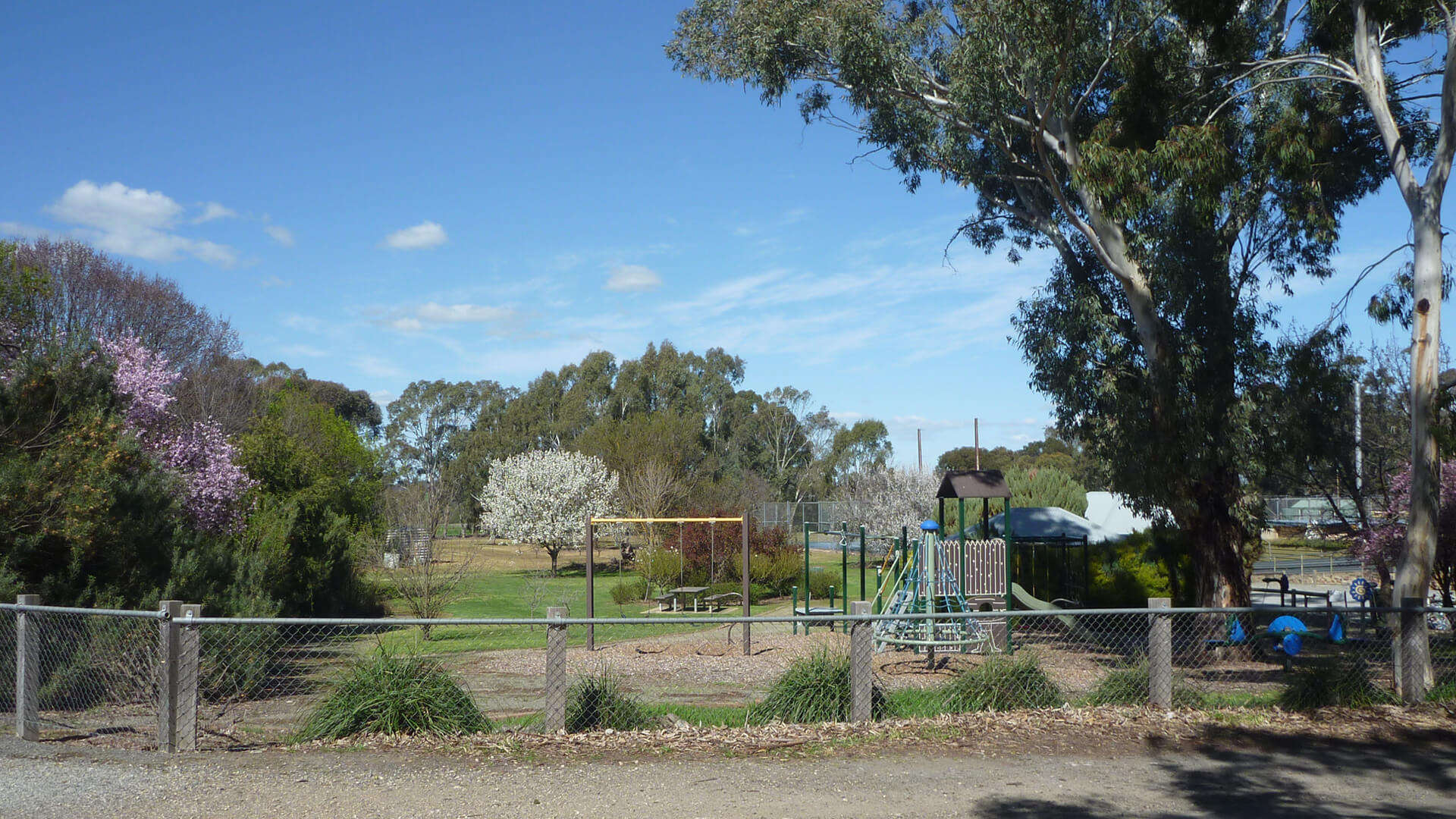
Torr Park provides community and visitor recreation facilities, including a landscaped picnic area with slate tables and seating, a sheltered BBQ, children’s playground, public toilets and baby change facilities and off-street parking. A community orchard and open park areas complement these facilities. Torr Park also provides recreational and sporting facilities for the Mintaro and nearby towns. These facilities include the tennis courts and clubrooms, and bowling green and clubrooms. The tennis courts can be accessed by visitors to the town (on request), while the bowling clubrooms are available to hire for community and private functions through the Mintaro Bowling Club Inc. The Torr Park facilities complement the sporting and fitness facilities at Mortlock Park. Torr Park is named after Sydney Torr, son of John Sampson Torr and Anne Torr (nee Tickle). History of Torr Park A land grant of allotments 52,53 and 58 was made to Henry Gilbert on 1 December 1849. On 6 December 1850 the allotments were transferred from Joseph Gilbert to James Hay. (This suggests a transfer was made from Henry to John Gilbert in the intervening period). There is no further reference to James Hay who was the owner of the land. He may have left for the goldfields (a common occurrence), died etc. He “abandoned” his interest in the landholding. (There is one suggestion he was buried at Harrogate in the 1860’s). On September 15, 1939 Sydney Torr filed a statement of his interest in the land and a request that it be transferred to his name. There were several other similar and supporting statements from other Mintaro landholders (Grim, Leo Giles, Scarfe etc) and the District Clerk of the Clare Council. In his statement Sydney Torr stated – • He was a retired farmer now living at Toorak • He was born in Mintaro , aged 74 years – suggesting a DOB of 1865. • He had good recollections of the land use for the previous 65 years – i.e. since age of 9 years. • During some of that time his uncle George McLeish was in possession of the land. Sydney Torr had been in control of the land for 40 years. • Lots 52 and 53 were used at various times by the tennis, cricket, croquet and football clubs as long as Sydney Torr could remember. • Lot 58 was used for grazing and agriculture • The tennis courts “had been laid down for 40 years,” suggesting they commenced in about 1899. • Other improvements had been made over a period of 15 years and included tennis courts, a croquet lawn and a shed. • Rent had been collected by Leo Giles (of Mintaro) for lot 58. (Note – Sydney Torr makes no reference to any previous Torr, i.e. James Sampson Torr, having an interest in the land – while this may have occurred (before he was born or before his recollection), Sydney Torr only refers to his uncle George McLeish.) In his statement Leo Giles said that Lot 58 had been in use (for grazing and agriculture) for over 40 years and that Lots 52 and 53 had been used for recreation and sport. Rates for the land (recorded in the rates book of the District Council of Stanley – later transferred to Clare) for the period 1895 to 1923 were paid variously by the Mintaro Cricket Club, Mintaro Croquet Club, Mintaro Tennis Club and George McLeish. It appears after this period Sydney Torr may have paid the rates. Following the application on September 15, 1939 by Sydney Torr (for his interest in the land to be registered) it was transferred to his name in 1940. Shortly afterwards, on 13 November 1940, he transferred ownership of the land to the District Council of Clare.[1]
13. St Peter’s Anglican Church
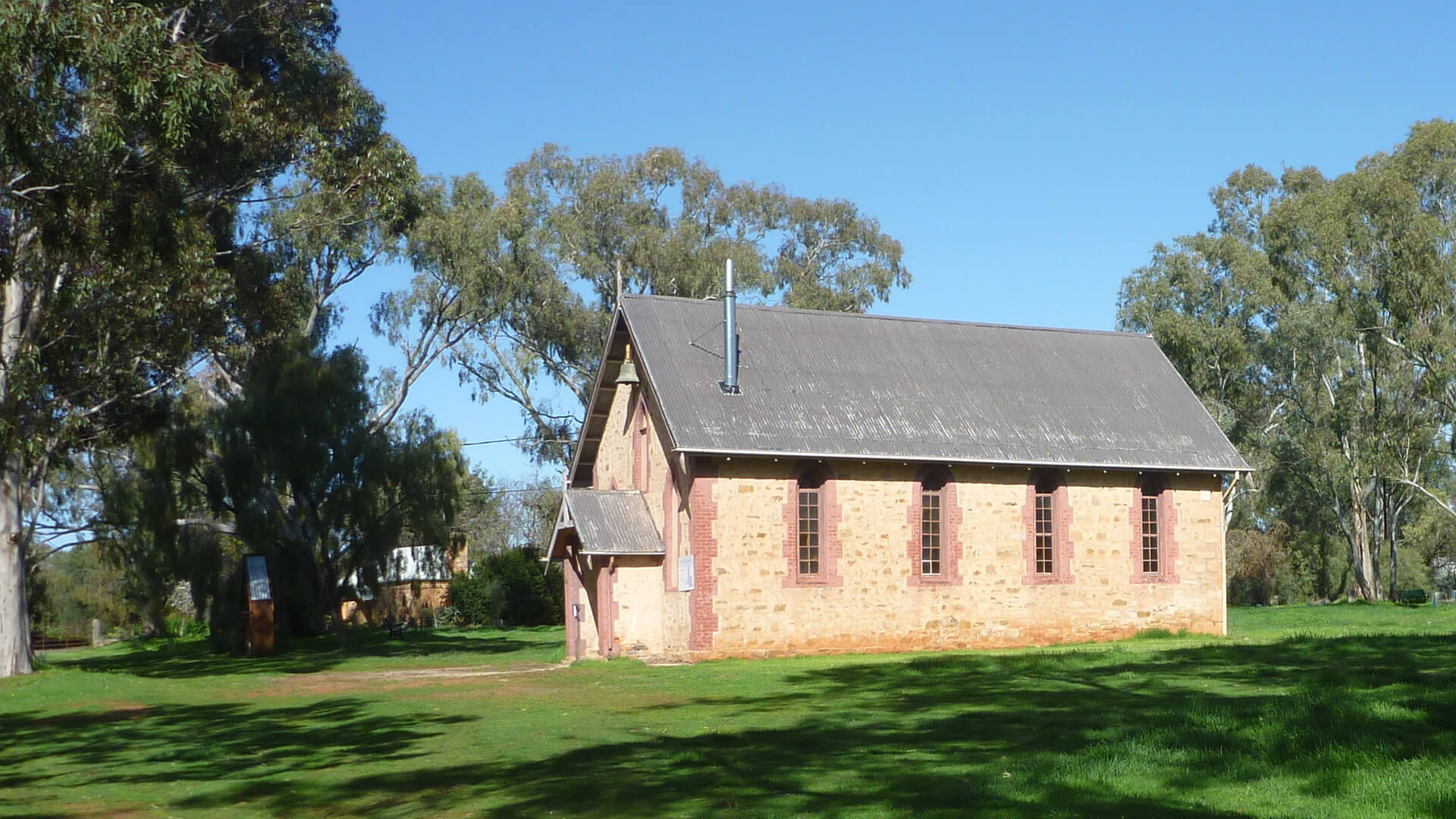
A simple Victorian Gothic church comprising one room, porch, gable roof. It was originally built as a Primitive Methodist Chapel in 1859 which closed in 1893 and remained unused till its conversion to the Anglican Church in 1905. In the Church of England Yearbook of 1894 it is noted that, “Great efforts have been made to re-establish a Sunday service at Mintaro, but hitherto without success. There are so few who would attend our church that they will not be responsible for the expense of renting a suitable building”. (1) Despite this apparent lack of enthusiasm, however, fortnightly services were eventually conducted in the Institute building from March, 1903, to August, 1905, by the Reverend Frank Sewell, Anglican Minister for Auburn and district. “In the month of March, 1905, Rosina Forsyth Mortlock (wife of William Tennant Mortlock, owner of “Martindale” station) commenced the movement for providing a permanent building for church purposes. In that month a meeting was called by the Rev. F. Sewell, presided over by the Archdeacon of the district, the Ven. Archdeacon Russell, at which it was decided to purchase an old disused protestant meeting house, which had been used originally by the Primitive Methodist sect, now unrepresented in the village”.(2) The church and land (including a four-roomed house and stable, later demolished to build a small Sunday school, which was itself demolished sometime between 1972 and 1981) was then bought from a Mr. Sydney Torr at a cost of ninety pounds. “A contract was entered into with Mr. Arthur of Manoora to make good the structure, to alter certain arrangements, and to erect others according to plans furnished by the Rev. W. Eugene Perrin, Rector of Unley”.(3) The restoration of the Church cost one hundred and twenty one pounds seventeen shillings with furnishings at thirty nine pounds nine shillings; the dedication took place on 17 August, 1905, and the church was renamed after the patron saint of St. Peter. The Mortlocks strongly supported the establishment of the church including the donation of numerous embelishments such as the altar candlesticks, and altar paintings added in 1914. Evidence suggests that without the instigation of the Mortlocks, the Anglican church may well have decided not to acquire the old Primitive Methodist chapel. In effect this building has a two-fold historical significance, being linked with the growth of Methodism in Mintaro in the 1850s and 1860s, and also, in latter times, illustrating the social influence of the large pastoralists in the district who by and large supported the Anglican faith because of their “social station”. Sources Vestry Record in St. John’s Anglican Church, Mintaro. (2) and (3). 1894 Church of England Yearbook Page 335 (1) “Methodism in Auburn and District”, Rev. Ian Paull, 1961 Page 13. — quoted from Mintaro Conservation Study[1] NOTES 1. Mintaro conservation study, McDougall & Vines (Architectural & Heritage Consultants), Norwood, South Australia, 1988.
29. Mortlock Park
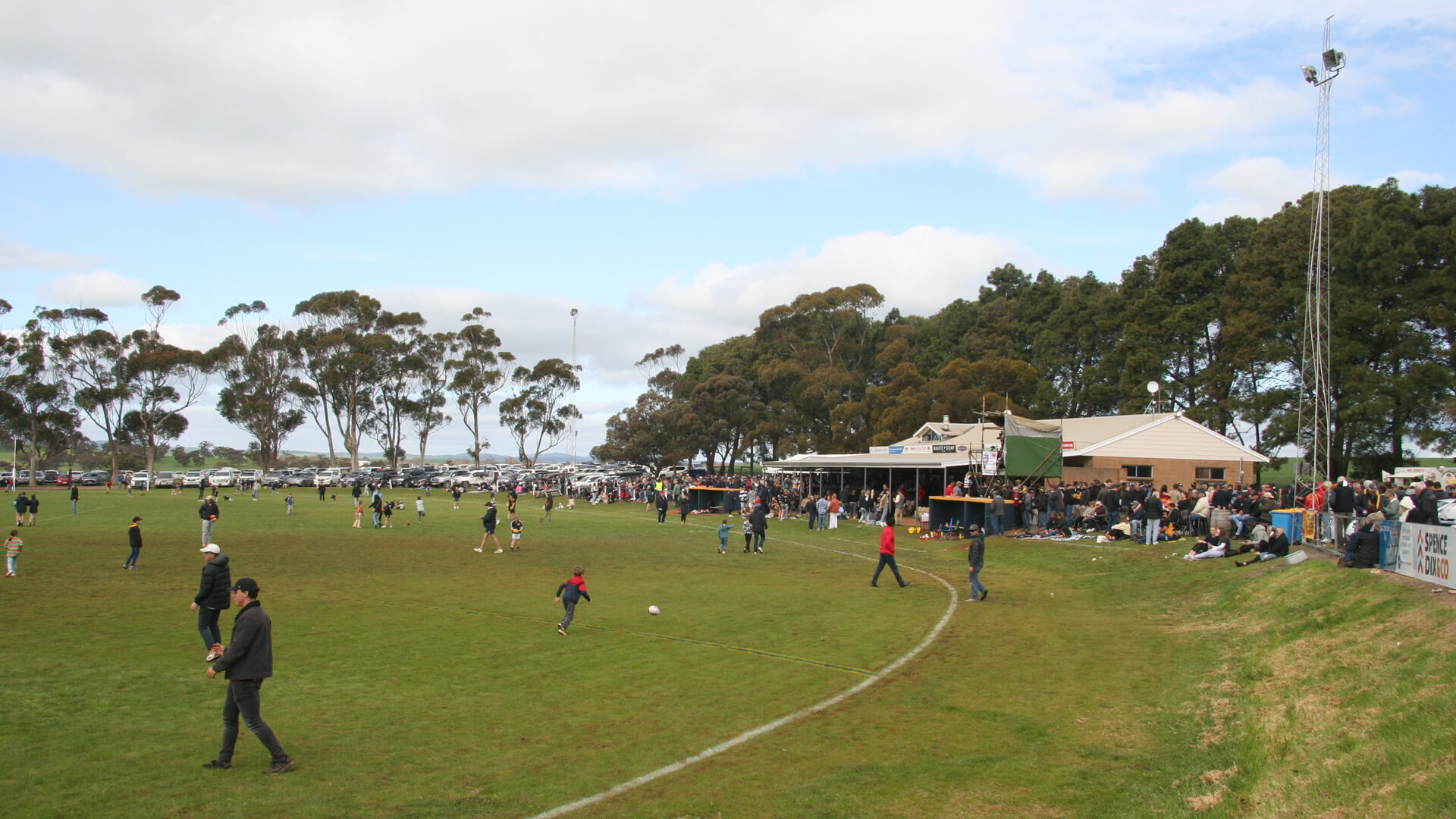
Mortlock Park is community land held in trust by the Clare and Gilbert Valleys Council to help provide recreation facilities for the community of Mintaro, the Clare and Gilbert Valleys region and visitors to the area. Council manage the property and the Mintaro Progress Association, through a lease agreement with Council, maintain the recreation facilities. The Association’s Mortlock Park Subcommittee is responsible for day-to-day maintenance, and are assisted by the Mintaro-affiliated sporting clubs who participate at the Park. The main user of the Mortlock Park grounds is the Mintaro Manoora Sporting Club. The Sporting Club along with Mortlock Park Subcommittee organise the running, setup and maintenance of the oval and netball courts and applicable facilities for the community. The facilities are used for football and netball games and functions during the winter season. Cricket games during the summer season are coordinated by the Auburn-Mintaro Cricket Club. Mortlock Park is made up of an oval, 3 netball courts, clubrooms, toilets, multiple sheds and water resources. The clubrooms are used for community and private functions. It is fully equipped with a stainless steel kitchen, including large oven and dishwasher, and also includes multiple change room facilities for team sports. In 2013 a portion of the Mortlock Park property was leased to the Minister for Emergency Services and houses the local CFS buildings and assets. This area is managed by the Mintaro CFS. In 2017 Mortlock Park was designated as the ‘Fire Last Resort Refuge’ for the community. Access to Mortlock Park for visitors, community members and sporting supporters should be made on the western side of the grounds, off Mintaro Road, through the Frederick Ranson Mortlock Memorial Entrance Gates.[1] Mintaro Progress Association sought approval in 2022 for the Frederick Ranson Mortlock Memorial Gates, which had been damaged and deemed unstable, to be redesigned to meet the entrance needs of the current century. They were rebuilt in 2023 with community support and were rededicated at a ceremony on 24 February 2024.
14. Wesleyan Methodist Church Group

The two most prominent religious denominations in Mintaro last century were the Wesleyan Methodists and the Roman Catholics but together with the Primitive Methodists and the Bible Christians, Methodism clearly dominated the religious life of the town. Many of the early pioneers of the town and district were active Methodists such as Edward Tralaggan, Thompson Priest, James Torr, George Sandow, Henry Jolly, and others. These settlers supported the establishment of the first Wesleyan Methodist church which was built in 1854 at a cost of £150. The builders were Messrs. Jenkins, J. Jenkins and Blackley and the Chapel built was one room with a door in front and one at the back, and two windows in each side. The 1854 Wesleyan Church was the first church built in Mintaro followed by St. Mary’s Roman Catholic Church which was dedicated in 1856. More Cornish people had been attracted to the town to work in Thompson Priest’s slate quarry and miners from Burra who had returned from the Victorian gold rush bought sections of land with their earnings and set up homes. Hence the population of Mintaro itself grew and also the proportion of the town that were practising Methodists. In 1867 the larger Wesleyan Methodist Church was built and dedicated in May of that year. This building was renovated in 1914 at a cost of £72.1Os. and a wunderlich ceiling added. Redecoration was again carried out in 1934. These two buildings are significant because they illustrate different stages in growth of the Wesleyan Methodist Church in Mintaro. The 1854 Church is an excellent example of a late primitive church with stone detailing which is rare in Mintaro. The 1867 Church is more sophisticated Victorian Gothic. There is additional visual emphasis on the front facade with corner buttresses, a small tower/spire, carved stone scroll and a slightly projecting porch.[1] Don and Julie Benger bought the two Methodist Churches in 1993. By this time the congregation numbers had dwindled. The small church or Sunday School Room, as it became known, was used occasionally and the larger church for special occasions such as ecumenical Christmas and Easter celebrations. In 2018 the Edmunds family bought the manse and the churches, which are being renovated. NOTES 1. Edited extract from Mintaro conservation study, McDougall & Vines (Architectural & Heritage Consultants), Norwood, South Australia, 1988.
01. Institute & Former Council Chambers
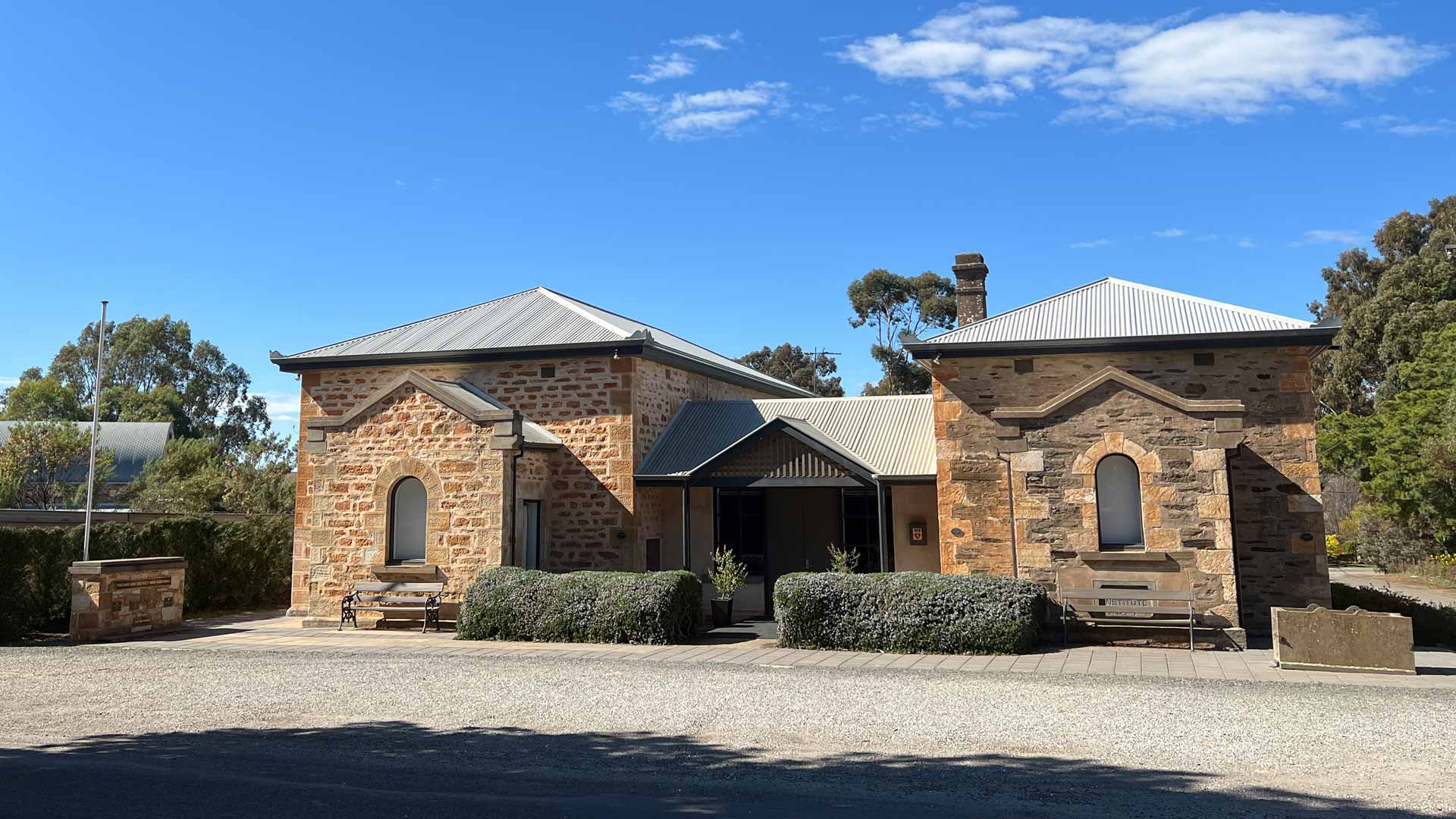
A meeting of the Stanley District Council was first held on May 5th 1868, the main outcome of which was a petition to call on the Government to establish a local court there. The Register of June 5th 1868 listed A. Melville, J.P. as Chairman and Patrick Dowd, George Faulkner, Daniel Brady and Henry Jolley as Councillors. About 9 years after the first meeting the Council Chamber, now known as the Civic or District Hall was built. It was linked to the adjoining Institute in 1942, ten years after the Stanley District Council was amalgamated with the District Council of Clare. The Civic Hall, on the right, was built in 1877 and the adjacent Institute was built a year later in 1878. The Institute has been the centre of the town’s social, cultural and entertainment activity. It has served as a polling booth and centre for issuing ration books, and on its walls are hung the various Honour Rolls of the Fallen as well as prominent local citizens. A bio-box was added in 1949 and in 1951 it was noted that the Institute “… was equipped with modern fluorescent lighting, Dunlopillo seats in some chairs, a bio-box and an electric tea urn is the centre of communal life”. In 1987 the recent extension linkage was built and both buildings restored and upgraded. The buildings were originally enclosed along the front by picket fencing which survived as late as 1951. Again, in 2019, the Institute was refurbished, adding wheelchair access to the supper room and an all-abilities toilet, as well as refitting the kitchen with improved facilities. This refurbishment was supported through a Building Better Regions Fund grant in conjunction with the Clare and Gilbert Valleys Council.[1] The Institute continues to be a hub for the Mintaro community, for meetings and events, and as a place for gathering on solemn occasions. The annual ANZAC Dawn Service is held by the war memorial in front of the Institute. With its upgraded facilities the Institute is available for public hire as a venue for meetings, conferences, weddings, receptions and the like. Notes Mintaro conservation study, McDougall & Vines (Architectural & Heritage Consultants), Norwood, South Australia, 1988.
